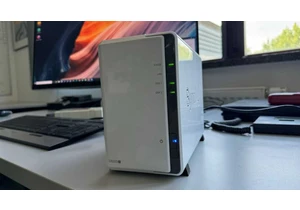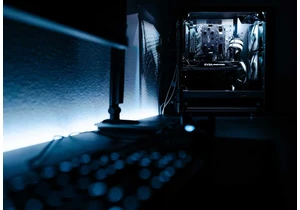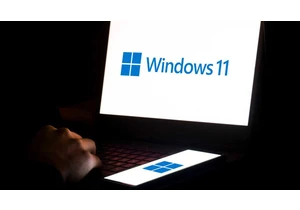After what felt like the kitchen sink of announcements at CES 2022, AMD CEO Dr. Lisa Su sat down for a virtual intimate press roundtable to discuss everything from PC gamers’ frustrations, what to expect of Zen 4, whether DDR5 will be a limiting factor, and if the Ryzen 6000’s GPU is too fast. Read the full transcript of our interview with Dr. Lisa Su, AMD CVP Laura Smith, and AMD CVP David McAfee below. (This interview was edited for brevity and clarity.)
Paul Alcorn with Tom’s Hardware: AMD committed to the AM4 platform, the AM4 socket for quite a long time. Can you guys give us any idea of how long you will stick with AM5?
Dr. Lisa Su: Well, we’ve been extremely pleased with how AM4 has evolved….we said we would keep that socket for a long time and we have. We continue to believe that it has been good for the community and frankly, it’s been good for us as well. As we bring things along, it was time to do a socket transition for the new I/O in the new technology, but I think strategy-wise, it should be similar. I don’t have an exact number of years but I would say that you should expect that AM5 will be a long-lived platform as AM4 has been. I think we’re expecting AM4 to stay in the marketplace for quite some years and it will be sort of an overlapping type of thing.
Gordon Mah Ung, PC World: AMD just introduced an affordable $199 Radeon RX 5500 XT and your competitor also introduced a card in that price range, but the reaction I saw from gamers was exasperation because they’re so frustrated and don’t expect to be able to buy the new cards at those prices or at all. Is there anything you can say to those PC gamers who feel like they’re at a breaking point?
Dr. Lisa Su: I think the overarching message for gamers is, we really look at this as a portfolio where we want to support the full range of gamers from top of stack to more mainstream. We understand that there haven’t been enough GPUs out there in 2021. We did actually ship a lot more desktop GPUs in the second half of 21, than we did in the first half. So not everyone has gotten them, but more people have definitely gotten them in the second half of ’21. And you’re going to see many more in 2022. We’re positioning the launch such that—and I know, you guys always say, ’Well, yeah, they’re just saying that’—but we really are positioning the launch at a $199 price point. It is sort of affordable to the mainstream. You know, we intend to have a lot of product out there. Do you want to add to that, Laura? AMD
Laura Smith, CVP of Radeon graphics: I would suggest that there’s a lot of dynamics that are involved in the availability of the GPUs. We have really optimized this one to be gaming-first at that target market. And you can see that with the way that we configured the part. Even with the four gigs of frame buffer. That’s a really nice frame buffer size for the majority of AAA games, but it’s not particularly attractive if you’re doing blockchain type activities, or mining activities. And so we’ve tried to make some real gamer-first transitions for the things that we don’t control but we have influence over to optimize that card to be as accessible as possible to that use of gamers.
Dean Takahashi, Venture Beat: What’s your reaction to Intel saying that they had the fastest mobile processor today? It’s not in our hands today, but do you have some clarity to add to that, like, as soon as you guys ship, yours is going to be faster?
Dr. Lisa Su: I think the most important thing is, frankly, for users to get the parts. We are very excited about Ryzen 6000. I think if you look at the single-threaded performance or multi-threaded performance, the graphics performance, the battery life, I mean, it is an all-out upgrade on all of those dimensions. I think we’re going to let the silicon speak for itself. But we feel very good about where it’s positioned. And we feel phenomenally good about the partnership that we have with the OEMs in terms of just the number of design wins, and the number of premium design wins. I think the progress that we’ve made in the notebook form factor over the last four or five quarters shows the strength of pricing, and we think Ryzen 6000 will continue that strength in the premium segments. David?
David McAfee, AMD CVP of Product Management: I think from a specs perspective, with the Ryzen 6000 series, hitting over 5GHz, bringing RDNA2 into the processor itself, as well as the innovation that’s gone into the product to maximize battery life and really deliver that incredible balance with the product, it is very well positioned. And I think we’re going to have to let the product speak for itself; we also don’t have our hands on the competitive systems and it’s going to boil down to the choices that OEMs make in those individual systems to really determine, you know, for specific use cases, which product delivers the best performance, but we think we’ve really put our best foot forward and have a great product in the 6000 series this generation.
Dean Takahashi, Venture Beat: When Intel enters the market here with graphics, it seems like the logical strategy for them is to come into the market with a high-performing part that craters the price and come out with a very low-priced graphics solution. Both Nvidia and AMD launched low-priced graphics solutions today. Is this a counter-strategy to that and not a coincidence that these things are happening?
Dr. Lisa Su: We’ve always said with RDNA2 that we wanted to cover the entire stack so we started at the high-end with the 6800 XT and the 6900 XT, and then we’ve been sort of coming down the stack. Look, I think competition is good, and we welcome competition. But overall, our strategy has not changed. And it’s to offer very competitive graphics capability across the entire stack. And this was the planned rollout that we had for the products.
Dylan Martin, Computer Reseller News: Obviously, we’re getting the Ryzen 7000 this year this year, we’re also getting some Milan X chips that are geared towards technical computing. And I was just curious: Do you expect the 3D chiplet technology to be eventually used for most of AMD processors in the future? And if so, when do you expect that to happen?
Dr. Lisa Su: The 3D chipset technology is just phenomenal innovation. If you think about what you’re trying to accomplish, we’ve been working on it for many years, in terms of optimizing the cache together with the CPU. You are right, what we’ve chosen to do in this generation is really an option that we’re adding on Milan that we call Milan X, as well as here with desktop gaming. I do expect over time that you’ll see it in more of our portfolio. But part of what we’re trying to build, Dylan, is sort of a portfolio that really is workload optimized. So it depends on what you’re trying to do, right? So if you’re in a case where you want more cores, you may not need the additional cache. And then in the data center side, when you have the scientific compute workloads that really can take advantage of the additional cache, or on the consumer side with gaming, we would use it. So think of it as an option, but an option that will go more broadly over our portfolio over time.
Dylan Martin, Computer Reseller News: With everyone doing their own kind of “smart” technologies and optimizing between GPU and CPU, how important are AMD smart technologies going forward? For winning new designs and attracting customers? Is this a situation where you would like to see OEMs eventually adopt AMD smart technologies across the board? And if you do want that, what do you need to get there?
Dr. Lisa Su: It’s a great sort of feature. The smart technologies are really when you bring together AMD CPUs plus AMD GPUs. Utilizing our software capability you’re just going to get better performance in that system. And when you actually think about the user, the user doesn’t think about, “You know, am I using X or Y?” they think about, “Hey, is my gaming performance better? You know, on battery versus not?” And if the compute technologies are smart enough to decide when you’re in different use cases, that’s just all value to the user. So I do think you’re going to see more of that. I think it’s important as we think about how to build better and more optimized systems. And I’m pleased with the work that we’ve done. That being the case, we’re always going to work—these are exclusive things—we will always work interoperably with other technologies. But when you use AMD plus AMD, you’re going to get a better answer. And that’s the whole purpose behind the smart technologies. AMD
Dr. Ian Cutress, Anandtech: Regarding 3D chiplets my question is kind of a bit broader. Because of you guys—one of the first to innovate on chiplets now—everybody wants to do it. But in a chiplet dominated future, how critical is it that you have to be the lead partner with your manufacturing foundry partners and your OSATs [Outsourced Semiconductor Assembly and Test] for these new packaging technologies, for these new process node technologies? You’ve got competitors in the market that are right at the bleeding edge, and you’re kind of one behind everybody, but everybody’s trying to compete. Everybody’s trying to throw money at TSMC to get the best. How were you able to aggressively assert that position in light of that increasing competition?
Dr. Lisa Su: All technology is not created equal. Our view of the world is that it is very important to have strong process technologies, strong packaging technology. We think we have led the chiplet technologies and are continuing to innovate in that area. And it’s really the package as it comes together. We’ve done very well with seven-nanometer technology, we’re now introducing six-nanometer, we’ve talked about Zen 4 and five-nanometer, we’ve talked about 2D chiplets, 3D chiplets—we have all of these things in our tool chest and we’re using the right technology for the right application. I think we’ve made good choices. At the end of the day these technology roadmaps are all about making the right choices at the right junctures, and, for example, our five-nanometer technology is really highly optimized for high-performance computing needs. So it’s not necessarily the same as some of the other technologies out there. We think we’ve optimized it well. I think it shows in some of the growth that we’ve had, both from a market share standpoint and an overall customer adoption standpoint.
Dr. Ian Cutress, Anandtech: You’ve spoken about how RDNA2 scales from PC, console, notebook, and kind of mentioned automotive as well during the presentation. Now, correct me if I’m wrong: The latest Tesla AMD Ryzen chip, if you decode the ID string, it’s Zen plus Vega. So perhaps RDNA is going to be embedded in automotive? And can you perhaps talk about that relationship with Tesla? Is it a multi-year deal? What’s going on there?
Dr. Lisa Su: We are very proud of the fact that we have RDNA in so many places, from consoles to PCs to our partnership with Samsung in the mobile space. And then in automotive, we announced last year that we are partnering with Tesla on the Model S and Model X, where they adopted both our APU as well as GPU technologies. You might have seen recently, they’ve also started, with the Model 3 and Model Y, adopting some of our technologies for their infotainment solutions. I think it’s a great partnership…[Tesla] is always pushing the envelope in what you put into the car, and we appreciate that they’ve chosen Ryzen and Radeon for their technologies there.
Marco Chiappetta, Hot Hardware: I just have a couple of questions that also piggyback on previous questions regarding the 3D V-Cache, and the selection of the 5800X to sort of bolt that onto. Considering it’s going to be a premium product, it’s likely going to have a premium price; why not associate that with your flagship mainstream CPU? What were the thought processes there?
Dr. Lisa Su: I’ll start and I’ll let David add to it. We were really looking at where would we add the most value in terms of workloads and for the gaming workload the 5800 was actually a nice sweet spot in terms ofwhere we saw this significant improvement in the gaming capabilities. David?
David McAfee, AMD CVP of Product Management: Centering on the idea that we wanted to deliver the best gaming part that we possibly could, using the technology in our tool chest, was what drove us to that eight-core 5800X3D product definition. You know, if you look at it, most games really stay within a thread pool of 16 threads or less; having a single CCD solution with that stacked cache on top of it, really provided…the most optimal game uplift across a wide variety of titles. So as we looked at that across the portfolio of games out there, as well as choices that we had in our product portfolio, that’s really what led us to the choice of the 5 800X3D. It really, by far, was the most advantageous from a gaming performance standpoint and delivered the best gaming experience that we could possibly put forward with that technology. Right mouse-click and select “open in new tab” to see original image. AMD
Marco Chiappetta, Hot Hardware: Have you explored having a 3D V-Cache on one compute die and not on the others so you don’t really give up the multi-thread advantage of a Ryzen 9 5950X versus a Ryzen 7 5800X. Is there similar gaming performance gains there, or does the imbalance sort of throw things off?
David McAfee, AMD CVP of Product Management: We looked at many, many different configurations during development of the product, both homogeneous as well as asymmetric configurations. I’ll say the, the biggest complexity in those asymmetric configurations is getting consistent performance and consistent scheduling in a Windows environment. And that was something that we definitely wanted to avoid: putting a product into the market that didn’t deliver time-in and time-out just a superior experience for the end user. That’s really why we stayed away from those particular options in the initial productization of a 3D stacked cache product.
Marco Chiappetta, Hot Hardware: I’m not sure if you guys have commented, but will socket AM5 be addressing all of AMD future desktop processors, including high-end desktop and mainstream? Or is it really just the next iteration of AM4, and we’ll probably see new HEDT [high-end desktop] processors as well?
David McAfee, AMD CVP of Product Management: For socket AM5, we haven’t talked about those plans in detail yet but you’ll get a lot more details about socket AM5 as we roll into 2022. But as the name would suggest, it truly is a successor to our AM4 socket infrastructure that’s in market today. So expect lots more details throughout the first part of the year here. But we do expect it to be kind of in line with the AM4 positioning in our portfolio.
Marco Chiappetta, Hot Hardware: AMD mentioned over 50 power optimizations in Ryzen 6000. But fundamentally, it’s using the same CPU architecture and RDNA GPU architecture that’s already existing; can you just provide some additional color on where the power optimizations come from? Is it a refined process? Is it firmware that allows for finer-grained clock gating? Where do you guys squeeze all the power optimizations from?
David McAfee, AMD CVP of Product Management: The power optimizations are a combination of design enhancements on existing IP. So, for instance, within the processor domain alone, I think there were somewhere around a dozen feature additions on top of the Zen 3 core architecture that really provide superior performance per watt. And you saw that throughout the SOC, both in terms of new features layered on top of existing capabilities on the chip, as well as new innovations that came into firmware, and other parts of the product. So it’s a combination of silicon enhancements in firmware that that really show up in the 6000 series mobile parts.
Paul Alcorn, Tom’s Hardware: In the keynote, one of the AMD presenters noted that (AMD) is the only company that can deliver efficient cores and performance cores in the same core. That seems like kind of like an odd statement, kind of a swipe there, especially considering what we see with Bergamo (AMD’s 128-core server CPU), which almost looks like an efficient core. Or maybe there’s just more focus on the client space and that just means AMD is committed to maintaining its current course, and not mix and match different types of cores in the client the way that Intel and Apple have.
Dr. Lisa Su: I think the overarching statement is we’ve looked at all different types of architectures. And we do that for both the client space as well the data center space. We believe that the optimization of Zen 3, particularly for the client form factor, is just really good. It’s a very efficient core to start with from a power standpoint and from an area standpoint it’s a very efficient core. When we put all that together, I think we get the Ryzen 6000 product, and that’s really the way to think about it. We will always do the right thing for the right application. So a few months ago, we announced on the server side that, yes, we have our Zen 4 baseline but we also have a dense version of that that we will put out into the market because there are some cloud-optimized applications that could use a more dense application. It’s really an overarching view that we believe we have an extremely efficient core for the client space. I think with the Zen 3+ implementation most people would not have expected that sort of performance uplift. And that’s really kudos to the team for doing those optimizations. We believe once you see it in action, you’re going to be pretty, pretty pleased with the overall performance and power. So that I think that’s what we were trying to say. David, if you want to add to that.
David McAfee, AMD CVP of Product Management: I couldn’t have said it any better. I think you’re spot on. It’s the dynamic range of that core, just really in client applications, that has led us to the conclusion that there’s no better solution than eight homogeneous cores as a part of that product to deliver both the performance and the efficiency. Right mouse-click and select “open in new tab” to see original image. AMD
Paul Alcorn, Tom’s Hardware: Okay, so it’s fair to say that that statement is more confined to just that product?
Dr. Lisa Su: That is a client statement. Exactly.
Paul Alcorn, Tom’s Hardware: AMD has gone all in with DDR5 memory with the Ryzen 6000 APUs. Right now, as we all know, there’s some pretty severe pricing and shortage issues there. Do you guys foresee any issues with that? Or do you maybe have a backdoor with DDR4 support somewhere? How are you guys going to overcome that if it presents itself?
David McAfee, AMD CVP of Product Management: As we looked at the RDNA2 engine as a part of the 6000-series processors, movin
Autentifică-te pentru a adăuga comentarii
Alte posturi din acest grup


Like many people these days, I’ve finally moved on from X (formerly T

DIY types already love building their own desktops, laptops, keyboard

A capture card is a niche PC component that you may be considering if

The deadline for Windows 10’s end of support is rapidly approaching,


OLED monitors are the latest and greatest thing in PC gaming. But lik
